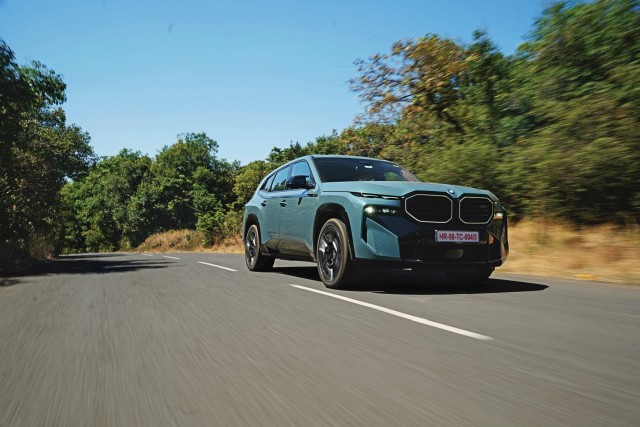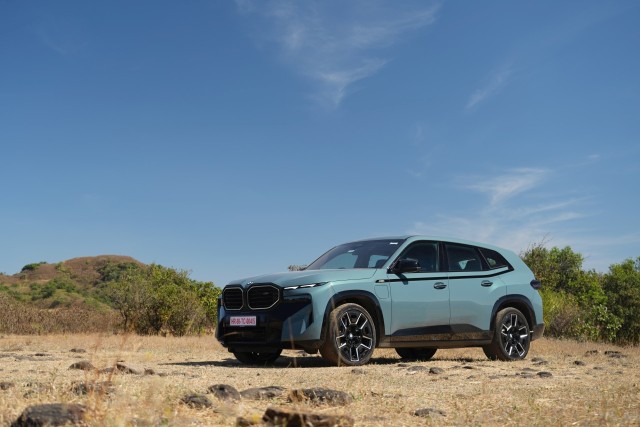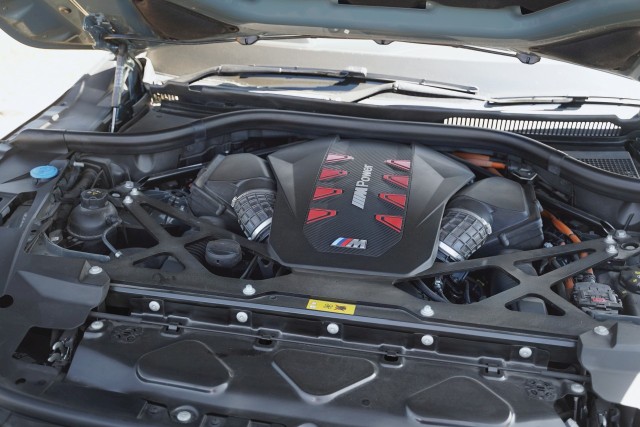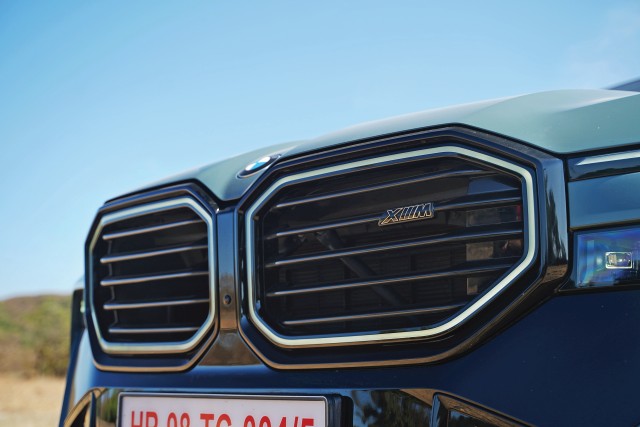The BMW XM looks quirky but, upon driving this 2.7-tonne, 653-hp V8 plug-in hybrid, one comes to realise just how much of an absolute unhinged beast it really is—and an efficient one too. Read on…

Story: Jim Gorde
Photography: Apurva Ambep
Combining a 4.4-litre twin-turbo V8 petrol engine with a 30-kWh battery pack and electric motor may seem like a weighty decision with catastrophic consequences. But if BMW had originally set out to create a new definition of ultimate driving machine with both immense joy and a double helping of sheer driving pleasure, they have succeeded. And very well.

The BMW XM combines two aspects that separates traditional car enthusiasts and the self-appointed green brigade—a V8 engine and an electric driveline. This combination was attempted only by a handful (both German, the AMG GT 63 S E Performance and Porsche with their Turbo S E-Hybrid line-up). This sort of set-up can be viewed as heavy and unnecessary, which it can be with a flat battery, but, conversely, with the battery charged up, it can open new depths of performance that were earlier unheard of, let alone experienced. Put them together with a few pages from a hedonist masterpiece and the outcome is a plug-in hybrid electric vehicle (PHEV) like almost no other.
The BMW XM is essentially everything the marque is and stands for. It has been developed for BMW entirely by the M division, with a good amount of tech from BMW i as well. It is a “MiX” like never before in the true sense of the term and also sits in a space BMW weren’t in earlier. Think of this as the unofficial X8 M. It is more premium than the X7 and sportier than the X6 M, with the performance dynamics of an M8. Okay, it may seem like a stretch at 5.1 metres long and a weight of more than 2.7 tonnes, but the 29.5-kWh battery (with 25.7 kWh usable) is laid out low in the floor. The new “S68” V8 uses two M twin-scroll turbochargers and 350-bar fuel injection, making a nice 489 hp lower down the rev-range, with 650 Nm of torque coming in from 1,600 rpm. This is joined by a 145-kW (197-hp) electric motor that’s good for 280 Nm internally, but at the pre-gearing stage (it is integrated into the eight-speed automatic transmission) it produces 450 Nm from just 100 rpm. This full hybrid drive system is made so that drive torque can be sent by either one or both motors to all four wheels via the special M xDrive all-wheel-drive system. Besides, the BMW eDrive technology, with the synchronous e-motor integrated into M Steptronic transmission, also has a generator function for recuperating energy for the high-voltage battery. Which is where the brilliance of the PHEV system comes in.

We were headed from our home town in Pune towards the hills, with a mix of urban traffic-rich streets, more or less open highway, and some winding roads with plenty of elevation change over the nearly 200-km distance, making for a great way to put its abilities to the test. The BMW XM weighs 2,710 kilograms but, and I do not say this in jest, feels like an M8 to drive. The size is closer to the X7 with an identical 3,105-mm wheelbase but it only has two rows of seats. I honestly don’t know where to begin because there is so much to talk about.

The concept-like quirky exterior with its huge octagonal signature kidney grille has elicited mixed response. But for those who drive, it represents just the surface of a beast itching to be scratched. Yes, they are lit up to stay up to date on trends. Besides, it’s safe to say the XM looks unlike any other BMW in existence. It looks like a working prototype concept more than a production car; the unique 22-inch wheels with staggered 275- and 315-section rubber furthering that train of thought. Looks are a major factor for many, but this is a car that begs to be experienced for what it is capable of delivering.




















Leave a Reply